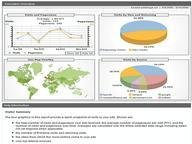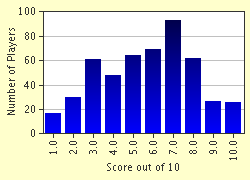Quiz Answer Key and Fun Facts
1. On a regular six-sided die, what is the probability that you will roll an even number if you throw the die?
2. Let's say you and your friend play a game that involves several coin flips. You flip three coins at the same time. If all three coins come up the same (all heads or all tails), your friend wins. Otherwise, you win. What is the probability that you win?
3. A spinner is divided into five equal sections, with each section having a different number from 1-5 written on it. When you spin the spinner once, the arrow lands on 1. You spin the spinner a second time. What is the probability that it lands on 1 again?
4. You play a game in which you flip a coin until you get tails. Each time your coin comes up heads, you win $200. If you play the game only once, what is the probability that you make exactly $1000?
5. A spinner is divided into twelve equal sections and each section is then labeled with a different number from one to twelve. What is the probability of spinning a composite number if you spin the spinner once?
6. The probability of picking a red marble from a bag of red, blue, and yellow marbles is 7/15. The probability of picking a yellow marble is 20%. There are 15 blue marbles in the bag. How many total marbles are there in the bag?
7. To win a game, I must do three things: Flip heads on a fair coin toss, roll a composite number on a number cube, and spin a 2 on a spinner with three equal areas, each labeled with a different number 1-3. What is the probability that I win the game?
8. There are four white marbles in a bag and six silver ones. Two marbles are drawn at random, one after the other. The first one is NOT replaced. What is the probability of drawing two white marbles in a row in your next draw?
9. Determine the probability that a randomly selected number between one and ten (including one and ten) is a factor of 24.
10. A couple has two children. At least one of them is male. What is the probability that one child is female, assuming the probability of having either sex is equal?
Source: Author
xxharryxx
This quiz was reviewed by FunTrivia editor
crisw before going online.
Any errors found in FunTrivia content are routinely corrected through our feedback system.

